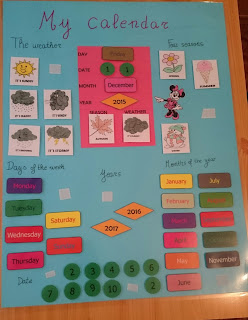PLANNING FOR EFFECTIVE USE OF ENGLISH IN THE CLASSROOM
As we have said in the other lessons, we can work and teach the second language to pupils as same as we do it in our mother tongue. So in this way we must provide them fun activities and situations in order to get a natural atmosphere, considering that in their daily life they learn playing, talking, touching,...
But to make this possible it is necessary to speak them in English as much as possible.
In the first point Helping children learn and improve the authors remind us several methods to use the English in class, for example to begin the session with routines, to give them easy instructions, to make a break, to talk about their personal lives and so on. It is really important too, the use of our body and the intonation when we are explain something or when we are talking with them.
On the other hand, we can utilize the first language (Spanish) when children have one problem to comfort them or when they don't understand what we say. Also we use the recasting if they are talking in their mother tongue, for example repeating in English what they were saying in Spanish, in order to improve their English skills and to show our pupils that we understand them.
As we have mentioned in many times, if one child makes a mistake the best way to correct him it is repeating in a better English, since they will learn the right way to say something and their self-esteem won't be wounded.
In the second point Using your coursebook as a resource, they tell about the coursebook can be a support and help us in our planning. We can work the contents and activities that the book suggests but also we can add other topics related with them. For example we teach them using flashcards, pictures, video recorders, stories, games or working with festivals. We must always keep in mind the age and level of our students.
In the last point, Planning your lessons, we have seen that we have to prepare before the English sessions and make sure about the space available in order to design the activities. We have to reflect on the knowledge of our students, the way they learn, the order of the activities, the resources we have, the groupings, if we want to follow a pattern (first routines, later introduce the topic with flashcards, review the topic with song, a break, the main activity, bye bye song),...
To end, if we want they improve their English, we must repeat a lot, speak slowly, tell about interesting and attractive topics for them and encourage and reinforce them when they take part in the class.
See you soon my friends!
M.R.M.













